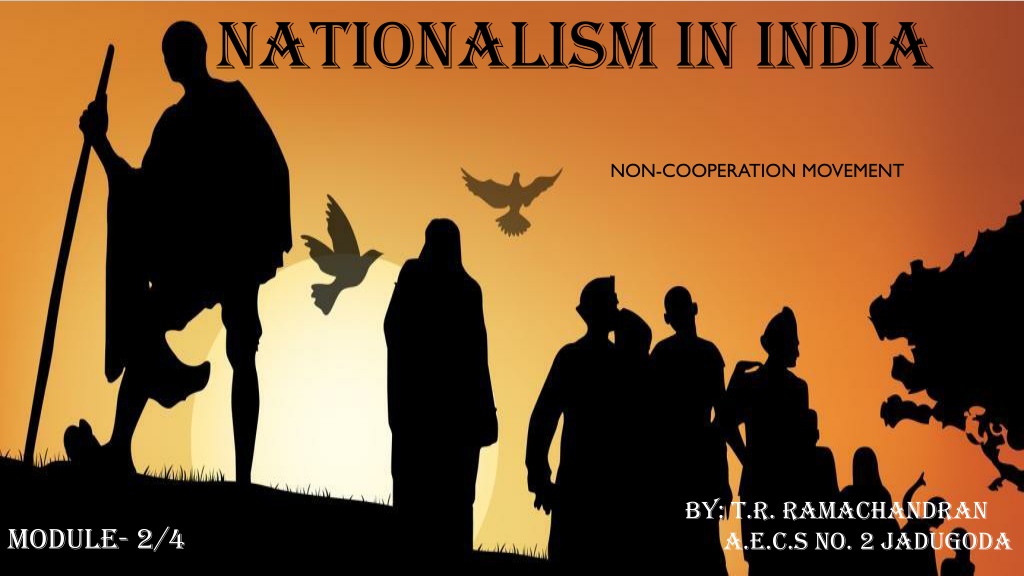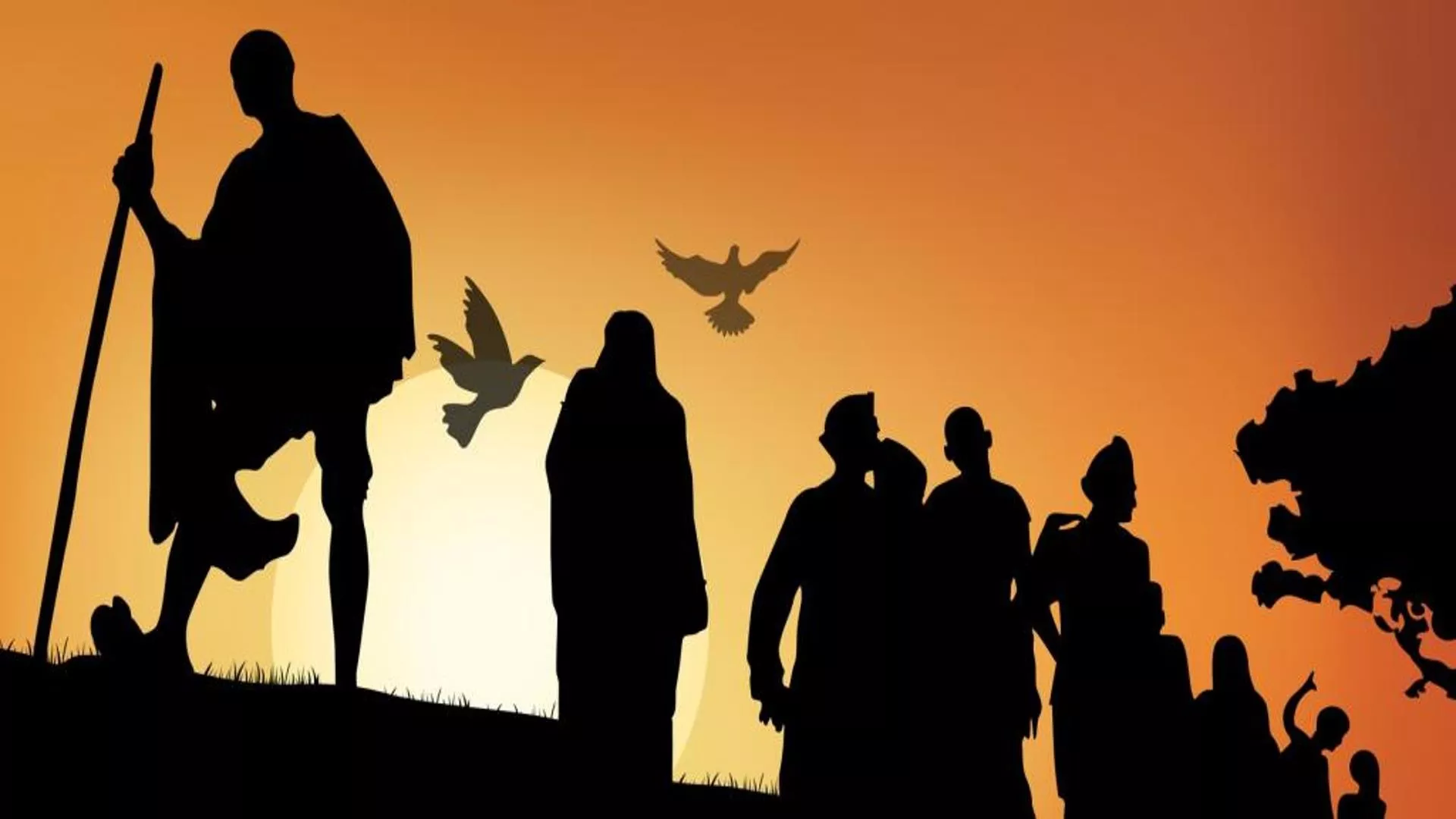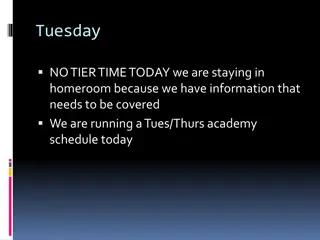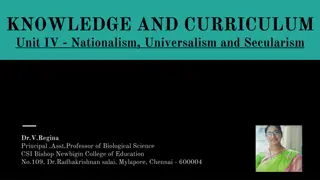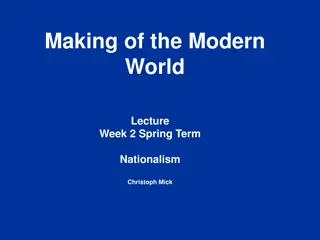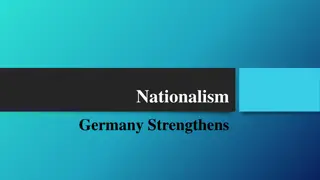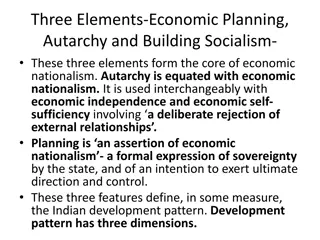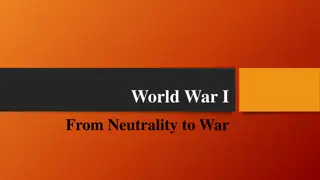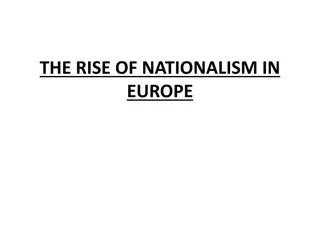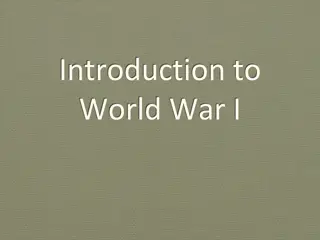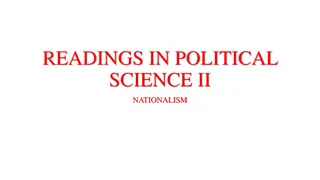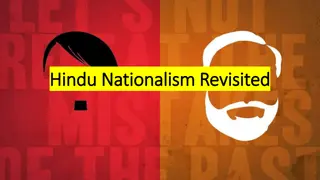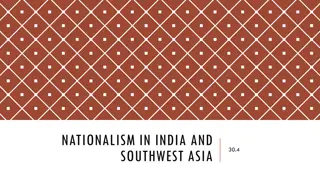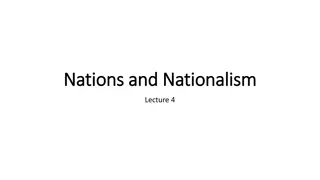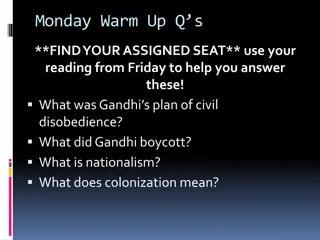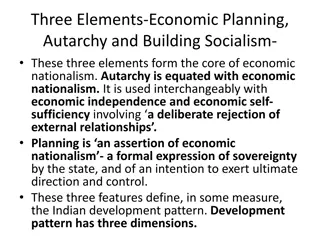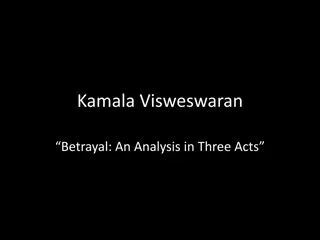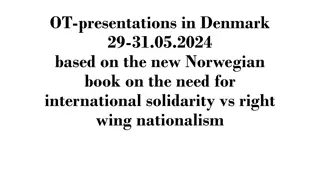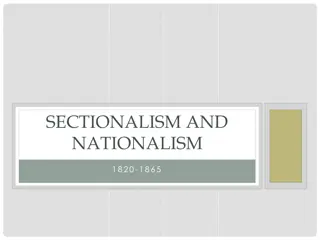NATIONALISM IN INDIA
Nationalism in India saw the emergence of the Non-Cooperation Movement in 1921, led by Mahatma Gandhi to protest against injustices towards Punjab and Turkey. The movement aimed to achieve Swaraj through non-violent means, advocating for the renunciation of British titles, resignation from important roles, boycotting institutions, and non-payment of taxes. This movement became a mass movement uniting various sections of Indian society against British rule and economic hardships.
Download Presentation

Please find below an Image/Link to download the presentation.
The content on the website is provided AS IS for your information and personal use only. It may not be sold, licensed, or shared on other websites without obtaining consent from the author.If you encounter any issues during the download, it is possible that the publisher has removed the file from their server.
You are allowed to download the files provided on this website for personal or commercial use, subject to the condition that they are used lawfully. All files are the property of their respective owners.
The content on the website is provided AS IS for your information and personal use only. It may not be sold, licensed, or shared on other websites without obtaining consent from the author.
E N D
Presentation Transcript
NATIONALISM IN INDIA NON-COOPERATION MOVEMENT By: T.R. RAMACHANDRAN A.E.C.S No. 2 Jadugoda Module- 2/4
NON-COOPERATION MOVEMENT Non cooperation movement was started in 1921 under the leadership of Mahatma Gandhi. It was a mass movement. It was a non violent Khilafat non-cooperation movement. Its aims were: To redress the wrong things done to people of Punjab and Turkey. Attainment of Swaraj
WHAT WERE THE IDEAS EXPRESSED BY GANDHIJI IN HIS BOOK? In his famous book Hind Swaraj (1909) Mahatma Gandhi declared that British rule was established in India with the cooperation of Indians and had survived only because of this cooperation. If Indians refused to cooperate, British rule in India would collapse within a year, and Swaraj would come. Therefore, he started the Non-Cooperation Movement.
WHAT WERE THE REASONS FOR GANDHIJI TO LAUNCH THE NON-COOPERATION MOVEMENT? First World War added to the misery of the Indian people. Heavy taxes, high prices, famines and epidemics made people s life miserable. Rowlatt Act invited large scale protests throughout the country. Jallianwala Bagh Massacre and the injustice done to Punjab made Indians angry. Muslims became unhappy due to the ill treatment of Turkey. They started Khilafat Movement. Many sections of the Indian society suffered considerable economic distress. In the towns workers and artisans, the middle class had been hit by high prices and shortage of food and essential commodities. The rural poor and peasants were victims of wide spread drought and epidemics. The British were unmindful to these developments. The Congress session at Nagpur (1920) adopted Gandhiji's the idea of Non-Cooperation
WHAT WERE THE STAGES PROPOSED FOR THE NON-COOPERATION MOVEMENT? Renunciation of titles: Subhramanya Iyer and Ravindranath Tagore renounced the honorary title Sir that they received from the British. Gandhiji returned his Kaiser-e- Hind medal. Resigning of important jobs: Many officers resigned their jobs. Boycott of legislatures: Many people refused to cast vote when the elections to the legislatures were held. It was followed by the boycott of schools and colleges, lawcourts, etc. Non payment of taxes: This was a powerful method of fighting an oppressive government. They were not ready to recognize the Govt. legitimate.
HOW DID NON-COOPERATION MOVEMENT BECOME A MASS MOVEMENT? Non-Cooperation was launched under Gandhiji s Leadership in 1921. It aimed at protesting against the injustices done to Punjab and Turkey and to attain Swaraj. Educated middle class led the movement in towns and cities. Educational institutions, law courts and foreign goods were boycotted. Council elections were boycotted in all provinces except Madras where the Justice Party of the Non Brahmins contested. Peasants organized movements against Talukdars and Landlords in villages under the leadership of Baba Ramchandra. Tribal people started an armed struggle in the Gudem hills of Andhra Pradesh under the leadership of Alluri Sitaram Raju. Workers in the plantations of Assam Started a struggle to get the right to free movement. Chauri Chaura incident forced Gandhiji to call off the Movement.
WHAT WERE THE EFFECTS OF NON- COOPERATION MOVEMENT ON THE ECONOMIC FRONT? The effects of non-cooperation on the economic front were more dramatic. Foreign goods were boycotted, liquor shops picketed and foreign cloth burnt in huge bonfires. The import of foreign cloth halved between 1921 and 1922, its value dropping from Rs 102 crore to Rs 57 crore. In many places merchants and traders refused to trade in foreign goods or finance foreign trade. As the boycott movement spread and people began discarding imported clothes and wearing only Indian ones, production of Indian textile mills and handlooms went up.
DIFFERING STRANDS WITHIN THE NON- COOPERATION MOVEMENT Movement in towns and cities: Educated middle class led the movement in towns and cities. Educational institutions and law courts were boycotted. The council elections were boycotted in most provinces except Madras where the Justice Party felt that entering the council was one way of gaining power. Foreign clothes and other goods were burnt in bonfires. People began to use Khadi clothes. Government Servants resigned their jobs. Liquor shops were picketed.
WHY DID THE NON-COOPERATION MOVEMENT SLOW DOWN IN TOWNS AND CITIES? Khadi clothes were very costly. The poor were not able to buy them. Indians boycotted British institutions like law courts and educational institutions. But alternative institutions did not come up. Consequently, teachers and children started going back to schools and lawyers started going back to their courts.
WHAT WERE THE CAUSE FOR THE PEASANT MOVEMENT IN THE COUNTRYSIDE? (VILLAGES) PEASANT MOVEMENT In Awadh, a peasant s movement was organized by Baba Ramchandra. It was against landlords and talukdars. Reduction of rent and the abolition of begar were their main demands. In many places nai - dhobi bandhs were organized by panchayats to deprive landlords of the services of even barbers and washer men. In June 1920, Jawaharlal Nehru began going around the villages in Awadh, talking to the villagers, and trying to understand their grievances. By October, the Oudh Kisan Sabha was set up headed by Jawaharlal Nehru, Baba Ramchandra and a few others. Within a month, over 300 branches had been set up in the villages around the region.
BABA RAMCHANDRA In Awadh, peasants were led by Baba Ramchandra, a Sanyasi, who had earlier been to Fiji as an indentured laborer. He led a peasant s movement in Awadh against Talukdars and Landlords. He demanded reduction of rent, abolition of Begar and the boycott of landlords. In October 1920, he formed Oudh Kisan Sabha with the help of Nehru.
TRIBAL MOVEMENT In the Gudem Hills of Andhra Pradesh, tribals started a movement under the leadership of Alluri Sitaram Raju. Tribals wanted to get back their traditional rights over forests. The methods followed by the tribals and peasants were against the Gandhian method of non-violence. They followed violent methods of struggle.
ALLURI SITARAM RAJU He led a movement of the tribal people in the Gudem hills of Andhra Pradesh. Many people considered him as an incarnation of God. They believed that he had many special powers. He supported Gandhiji and asked his followers to wear khadi and stop drinking. But, he organized an armed struggle against the British. He asserted that India could be liberated only by the use of force not non-violence. Raju was captured and executed in 1924 and overtime became a folk hero.
MOVEMENT IN THE PLANTATIONS Workers in the plantations of Assam demanded the right to move freely in and out of the estates. They opposed the Inland Emigration Act of 1859 which took away the right to free movement. When they heard about the Non-cooperation movement, they moved to their villages. They thought that the Gandhi Raj was coming and everyone would be given land in their villages. However, they were caught and brought back.
WITHDRAWAL OF NON-COOPERATION MOVEMENT Gandhiji withdrew the Non-Cooperation Movement because: The movement became violent in some places. In February 1922, in Chauri Chaura (Uttar Pradesh) people turned violent and set fire to a police station. Twenty two police men were killed in this incident. Gandhiji was saddened by this incident. The movement slowed down in urban areas. He thought that it was necessary to train the people in non-violent satyagraha.
SIGNIFICANCE OF THE NON-COOPERATION MOVEMENT Non-Cooperation movement was a large scale mass movement. It attracted common people from all social groups. Non-Cooperation movement and Khilafat movement went together. So, they promoted Hindu-Muslim unity. Peasants and tribals movements became a part of the Indian National Movement. It was a non-violent movement. So, it popularized the Gandhian idea of Non-violent satyagraha.
GIVE EXAMPLES TO PROVE THAT THE TERM SWARAJ MEANS DIFFERENT THINGS TO DIFFERENT PEOPLE The term swaraj means self rule or dominion status for the Congress people. It is the type of government granted by the British in other self-governing colonies of Australia and Canada. To peasants in Awadh swaraj means reduction in tax, abolition of begar or forced labour and social boycott of oppressive land lords. To plantation workers in Assam, swaraj means right to move freely in and out the plantation where they were enclosed and retaining a link with the village from which they had come. To the tribal peasants of the Gudem hills of Andhra Pradesh swaraj meant right to enter forest and collect forest products, graze cattle and give up forced labour.
